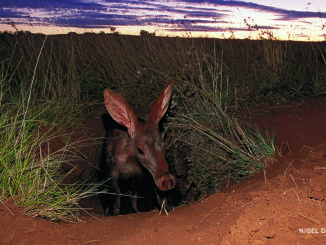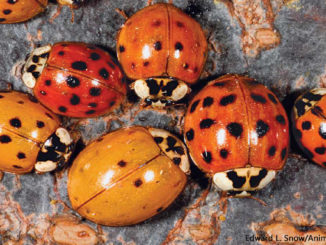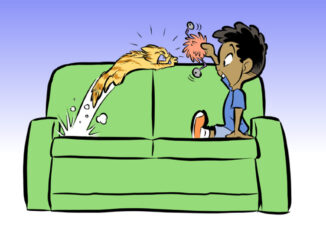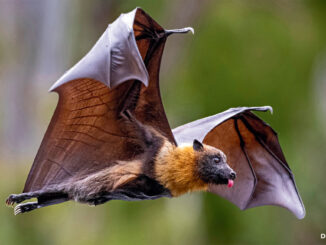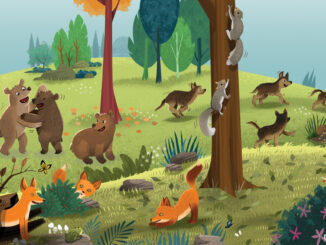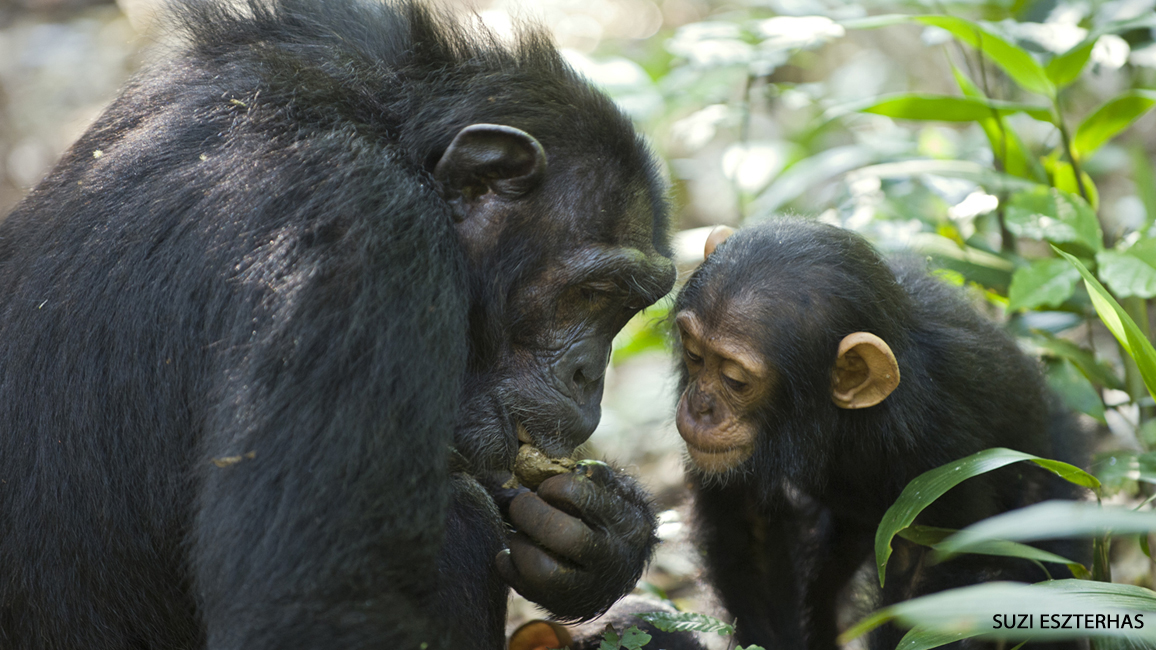
All Eyes on Chimps
By Hannah Schardt; photos by Suzi EszterhasSwinging from branch to branch, the little chimpanzee below looks like a natural. But as all chimps do, he learned everything he knows—how to swing, what to eat, where to sleep—by watching other members of his group. And who else is watching and learning from chimps? Scientists—all day, every day!

There are more than 1,200 chimpanzees in Uganda’s Kibale National Park (see map above), and Dr. Jessica Hartel knows a few dozen of them very well indeed. She’s the Director of Conservation at the Kibale Chimpanzee Project. The scientists working on this project have studied one group of 60 chimps for more than 30 years!
Each morning, the scientists all wake up before dawn. They walk through the dense, dark rainforest—sometimes for an hour or more—to reach the group’s night nests. (A chimp makes a new nest every evening in a different treetop.) After the chimps climb down to start their day, each scientist picks a single chimp to observe until nighttime. If the chimp wanders for miles looking for food, the scientist follows. If the chimp stays in the same spot for hours, doing not much at all, the scientist does, too. The chimpanzees are used to having scientists around. So they ignore them and go about the business of being chimps!

WHO’S WHO?
You might think it would be hard for scientists to tell one chimp from another. But just as people do, each chimp has a one-of-a-kind face, voice, and personality. Jessica and the other scientists can tell the apes apart even when they can’t see them. “Sometimes I’ll hear a call from several hundred feet away and think, Oh, Lanjo’s on his way!” she says. (That’s Lanjo she’s watching in the photo on page 7.)
The scientists can also tell the chimps apart by watching how they act. Some are shy. Others are friendly. And some are downright grouchy!
LET’S EAT
As the scientists follow their chimps from place to place, a lot of what they see is chimps chowing down. Finding and eating the right foods is a big part of a chimp’s day. Chimpanzees prefer fresh fruit, especially figs—and monkeys when they can catch them. But when fruit is scarce, they eat leaves and stems.
Of course, chimps don’t use forks and knives. But they DO use tools that help them eat. Scientists in some places have seen chimps poking sticks into the ground or a hollow log to “fish” for termites. In other places, the apes use heavy stones to break open tough nuts. Not all chimp groups use the same tools in the same ways.
CHIMPANZEE, M.D.?
When a wild chimp feels a little sick, he or she can’t go to a doctor. But there are things a chimp can do to feel better. Sometimes these brainy apes treat themselves with certain medicine-like plants.
Here’s one example that’s pretty clever—and a little gross: There’s a certain kind of worm that sometimes lives in the guts of the Kibale chimps. And during the rainy reason, there are even more of these worms than usual. This can make the chimps sick. So each morning before breakfast, a chimp will fold up a rough, hairy kind of leaf and swallow it whole. When the chimp poops out the leaf, a worm often comes out with it! Chimps may also use other plants to treat upset stomachs or other illnesses, such as malaria.
ROOM TO GROOM
Chimpanzees spend a lot of time picking through each other’s hair, pulling out dirt and pests. This is called grooming. It keeps the chimps clean and healthy.
But it also helps a chimp relax and feel good. So all that picking and stroking makes it easier for chimpanzees to get along together—and keeps the community running smoothly.

TOUGH GUYS
When a female is ready to mate, all the males from her group compete for her attention. If a male chimp wants to show another one that he’s the boss, he stands tall, his hair on end, and starts rocking back and forth. Then he charges at his rival, throwing sticks or rocks as he runs! Often, this is enough to make the other male back down. But sometimes two males will chase and wrestle each other until one quits the fight. When two chimps tussle, though, they often end up grooming each other afterward. It’s their way of saying, “Let’s be friends again.”
CHIMPS IN TROUBLE
Once, millions of chimpanzees lived in Africa. But people cut down much of their forest home and caught many chimps to eat or to sell as pets. Today, fewer than 300,000 remain. Even in protected places such as Kibale National Park, chimps are in trouble. People who live nearby sneak into the park to set snares, or traps, to catch other kinds of animals. Sometimes a chimp gets a leg or arm caught in one of the hard-to-see snares. So conservation patrol teams from the Kibale Chimpanzee Project work with Uganda Wildlife Authority rangers to roam the forest, removing snares before they can snag a chimp. People aren’t only looking AT Kibale’s chimps all day, every day. They’re also looking OUT for them!



